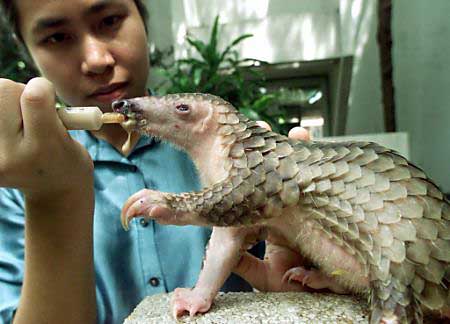Just the facts #1

I suppose this will be an ongoing series, but it was precipitated by a query from a friend via Facebook the other day, his question was as follows:
Is DNA a physical thing? For example, those double-helix pictures you see, is DNA a physical thing that actually looks like that, or is that just a representation of DNA?
If DNA is a physical, tangible object, where does it exist? Does it exist IN cells? Around cells? Between cells?
It surprised me that such basic understanding of the foundation of biology was lacking in a relatively well educated adult, but I answered, nonetheless. And as an attempt to make people sound more informed in public debate (that is, debate in public bars of hotels) on topics such as "Genetic Engineering" and such topics, I will repeat and expand my answer here.
First of all, yes, DNA is a physical structure. It denotes the molecule Deoxyribo-Nucleic Acid, a very scientific sounding name which describes its
a) chemical components and structure: deoxyribo = deoxygenated ribose (a type of sugar)
b) location: nucleic = from the nucleus
c) chemical properties: acid = pH below 7.0
The molecule itself consists of a phosphate/sugar "backbone" with a series of bases attached, of which there are four: Adenine (A), Thymine (T), Guanine (G) and Cytosine (C). Due to difference in electrical charge between the bases, they pair up, A with T, and G with C. This pairing means the molecule rarely exists as a single strand, but is bound in a double helix a spiral shape, a section of which is shown at the top of this post. The backbone forms the sides of the ladder, while the basepairs form the rungs.
DNA is not visible to the naked eye, though if unravelled and laid in a straight line, a single stand of human DNA would be around three metres long. That's a lot of information to fit into every single cell of your body, so it is wound and twisted into an extremely compact form, known as a chromosome, so it can do so. This is how every cell is able to contain all the information required to replicate an entire organism, and is what makes cloning possible, not to mention basic ongoing maintenance that keeps the organism functioning.
Any questions?
Labels: basics, deoxyribonucleic acid, DNA, dummies


6 Comments:
yes.
can you please tell me if there are cells that do not contain DNA? If yes, please give me some examples. Also if yes, what is the difference between DNA-less cells and cells with DNA as it what do they do differently and why do some have it and some don't (if it is known).
hey, I was/am (by training if not by vocation or employment) a physicist. DNA is too complicated for our tiny brians,
oh. also: hello.
I will answer in detail tomorrow, elaine.
In the mean time, email questions to
thelastscientician@gmail.com
also: hello!
where is my answer? it is tomorrow. now. from yesterday. not from any other day.
um.
I WANNA KNOW THE ANSWERS.
don't make me go research it myself...
OOPS!
Got sidetracked with my job and stuff.
Answer coming up.
You said "DNA is not visible to the naked eye". Surely you need to qualify that statement? The DNA in wheatgerm can be extracted and seen with the naked eye, although obviously it's not going to look the same as it would under a microscope, but it's still possible to see the threadlike strands of DNA.
Kristy
Post a Comment
<< Home